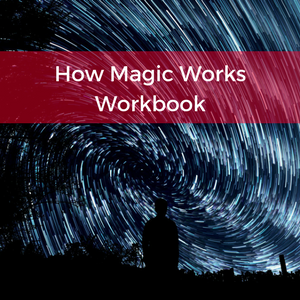Photo by Rhett Wesley on Unsplash
One of the problems I see occasionally in occult literature and conversation is that a given term will be used to try and describe a wide range of experiences that may not fit that term. For example the term visualization is sometimes used to describe sensory experiences that aren’t visually based. It’s a convenient term because its meant to describe an experience you’re having, but the problem is that the focus on the visual and on the sense of sight influences the understanding of that term.
If I use the word visualization to describe a magical working, what I’m typically describing is an experience where the visual component of the experience takes priority. For example, if I’m doing a pathworking, I might visualize specific imagery that is used to create the environment I’m going to work in. Visualization has become a more prevalent technique, in part, because of visual media and the role it plays in our everyday lives.
I use experiential embodiment when I describe sensorial experiences that aren’t primarily based around visualization, but are a part of magical work. Experiential embodiment focuses on the sensorial experiences of touch/kinisthetics as well as sound, taste and smell and recognizes that these experiences can play just as important a role in whatever work we’re doing that engages the senses. Why even come up with a term such as experiential embodiment? The reason is because it emphasizes alternate ways of experiencing and knowing the world that aren’t sight based.
Visualization is sight based and so it can create a sense of distance, of removal from the experience, because its base on observation through what we see. Experiential embodiment, in contrast, emphasizes experiences that are more direct. For example, when I’m doing a qi gong movement, I’m carefully paying attention to the tactile and kinisthetic experiences of my body moving and how the qi responds to those movements. If I were to visualize those same movements, I would miss out on the essential aspect of the experience, which is the focus on the body experiencing the tactile and kinisthetic changes that occur.
When we get wrapped in a specific way of experiencing and knowing the world, we can miss out alternative methods of experiencing and knowing the world. I can’t visualize a song, but I can listen to that song and let the experience of the sound create a transformative experience. Visualization has a purpose in magic, but paying attention to the other senses and integrating them into our magical practices is just as important.
I started using experiential embodiment to describe the experiences that I have that aren’t sight related, because I found the term visualization to be misleading. While it could be argued that visualizations can and do include other sensorial experiences, the emphasis is on the visual aspect of the experience. I wanted to differentiate between that emphasis and the emphasis might occur if you focused on a different sense, because in doing so it enables an attention to the specific experience and how that experience is shaped by the magical work being done.

